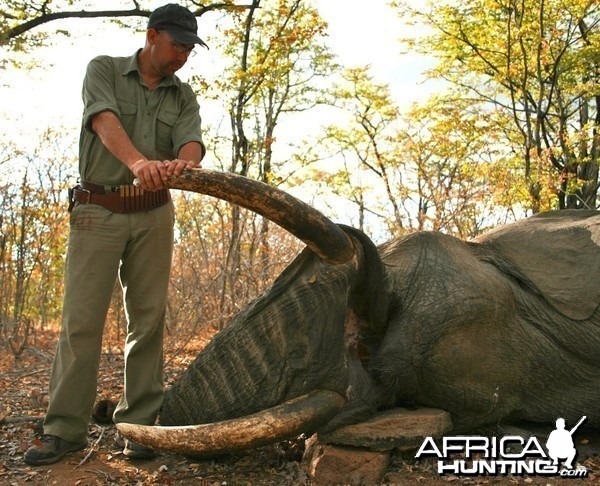Satao, one of Africa’s largest elephants, killed by poachers for ivory tusks weighing more than 45 kg
by Zoe Flood, The Telegraph | June 15, 2014
Richard Moller, of The Tsavo Trust, who had been monitoring Satao for several months, said: "There is no doubt that he is dead, killed by an ivory poacher’s poisoned arrow to feed the seemingly insatiable demand for ivory in far off countries. A great life lost so that someone far away can have a trinket on their mantelpiece."
One of Africa’s last “great tuskers,” elephants with ivory weighing more than 45 kilograms, has been poisoned by poachers in Kenya.
The bull, named Satao, and likely to have been born in the late 1960s, succumbed to wounds from poison darts in a remote corner of Tsavo National Park, where he had migrated to find fresh water after recent storms.
Yesterday, his carcass lay with its face and great tusks hacked off, four legs splayed where he fell, left only for the vultures and the scavengers.
A soaring demand for ivory in a number of Asian nations has seen poaching reach levels that were last seen in the 1980s before the ivory trade was banned.
Conservationists told how Satao moved from bush to bush always keeping his ivory hidden amongst the foliage. “I’m convinced he did that to hide his tusks from humans, he had an awareness that they were a danger to him,” said Mark Deeble, a documentary maker who has spent long periods filming the elephant. Satao’s killing is the latest in a surge of elephant poaching across Africa.
Richard Moller, of The Tsavo Trust, who had been monitoring Satao for several months, said: “There is no doubt that he is dead, killed by an ivory poacher’s poisoned arrow to feed the seemingly insatiable demand for ivory in far off countries. A great life lost so that someone far away can have a trinket on their mantelpiece.”
A soaring demand for ivory in a number of Asian nations has seen poaching reach levels that were last seen in the 1980s before the ivory trade was banned.
“The loss of such an iconic elephant is the most visible and heart-rending tip of this iceberg, this tragedy that is unfolding across the continent,” said Frank Pope of Save The Elephants in Nairobi.
The street value of elephant ivory is now greater than gold, running to tens of thousands of pounds per tusk. Organised criminals are increasingly running poaching gangs and networks, officials have said.
More than 20,000 African elephants were slaughtered in 2013, according to the Convention on International Trade in Endangered Species of Wild Fauna and Flora (CITES).
The Kenya Wildlife Service (KWS) has documented the killing of 97 elephants so far this year. Experts dispute official statistics claiming that the number of elephants that have been killed has declined. KWS recorded that 302 elephants were poached in 2013, down from 384 the previous year, of a total estimated population of 38,000 in Kenya.
Satao’s killing is the latest in a surge of elephant poaching across Africa.
In March, the renowned conservationist Richard Leakey described poaching in Kenya as a “national disaster,” saying poachers were operating with “outrageous” impunity.
Earlier this month, police seized more than 200 elephant tusks weighing more than 2,000 kg in a warehouse in the port city of Mombasa. Nelson Marwa, Mombasa county commissioner, said the find was linked to terrorism and drug barons in the city.
One of Africa’s last "great tuskers,"elephants with ivory weighing more than 45 kg, has been poisoned by poachers in Kenya.
Until recently, poachers in Kenya faced lenient sentences and few were successfully prosecuted.
A study by WildlifeDirect, a Nairobi-based charity, found that over the past five years just 4 per cent of those convicted of wildlife crimes in 18 of the country’s courts were sent to jail. There is hope that tough new legislation passed earlier this year will lead to higher conviction rates and tougher sentences.
“Satao was probably one of half a dozen of Kenya’s great tuskers, possibly the largest,” said Mr Deeble.
“It’s a devastating situation. Kenya’s last great tuskers need presidential protection.
“If Satao’s death can galvanize the focus on what’s actually happening here in terms of poaching, then he won’t have died in vain.”
Source: http://news.nationalpost.com/2014/0...tusks-weighing-more-than-45-kg/#__federated=1



 www.africahunting.com
www.africahunting.com
